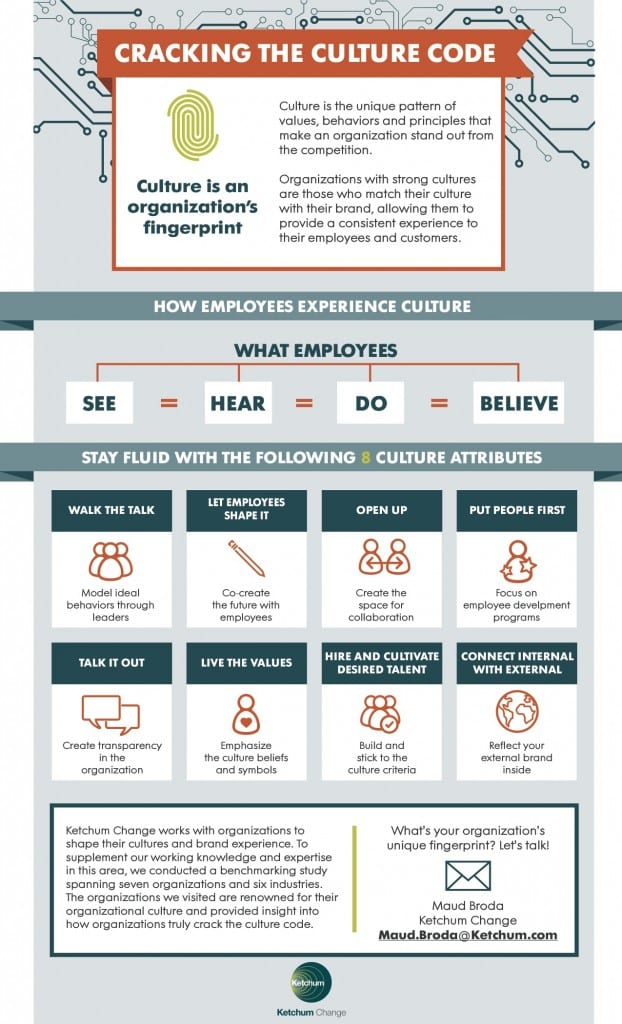 Organizational culture is the result of what employees see, hear, do and believe. It unites people around a shared mission and goal, creating a sense of meaning around relationships, work and achievement in the workplace. Employees are an organization’s most important asset, and therefore developing an authentic culture is key to the success of your business.
Organizational culture is the result of what employees see, hear, do and believe. It unites people around a shared mission and goal, creating a sense of meaning around relationships, work and achievement in the workplace. Employees are an organization’s most important asset, and therefore developing an authentic culture is key to the success of your business.
With this in mind, Ketchum Change conducted a benchmarking study across six industries with seven companies who have highly distinctive cultures (and are leaders in their field) to better understand how strong cultures are formed. Unsurprisingly, we found that organizations with high-performing and authentic cultures are those whose culture matches its brand – where the external experience for customers and consumers is complementary to the internal experience for employees. The following eight attributes emerged as factors leading to an authentic culture.
- Walk the talk
Encourage leaders to visibly demonstrate company culture through their words and actions. Employees look to leaders as an example of how to behave in line with company culture and values. - Let employees shape it
Provide opportunities for employees to co-create your organizational culture by gathering feedback, empowering culture ambassadors and letting them drive programming. - Open up
Take down walls – literally and figuratively. Encourage people to connect across boundaries and to collaborate and communicate openly to promote the sharing of knowledge and ideas. Enable this way of working with supporting systems, processes and technology that make it possible. - Put people first
Emphasize employee programming, development and engagement. Don’t forget that your employees are your most valuable asset. - Talk it out
Enable communication avenues with employees to share organizational strategy, direction and goals. Make it a dialogue. - Live your values
Bring your values to life through internal communications, performance evaluation and employee programs. Think about what symbols in the organization really show what you believe in. - Hire and cultivate desired talent
Define the criteria that will attract the right talent to build your culture; make sure those same aspects are imprinted in recruiting and on-boarding materials. - Connect internal with external
The boundary between your team and the outside world is more porous than ever. To keep up with the pace of change going on in the world around you, you must use the outside world as a source of inspiration for your team.
The eighth attributes above are synthesized in the infographic below:

So what does it take to start making this happen? First you want to scan the culture to audit the current state environment. Where are there big opportunities to shift behaviors to better align with these success factors? Next you want to clearly define the vision for your evolved culture. How can you involve employees through engaging platforms to co-create the vision? Then you’ll want to create a roadmap for how you’ll get there, identifying the high-value near, medium and long-term activities.
Think about your organization. Where are you going and what do you need from employees to get there? Although you may feel your organization’s culture is set in its ways, it is still malleable and an evolving culture is essential to staying relevant. While it will likely always have the same core, there are many things you can do to help it take on a different shape by being liquid in a constantly changing environment and focusing on what is special and unique about your organization. By creating a compelling brand experience, engaging employees and aligning your culture with these eight attributes, you will set your organization up for success and be positioned to lead in the marketplace.


